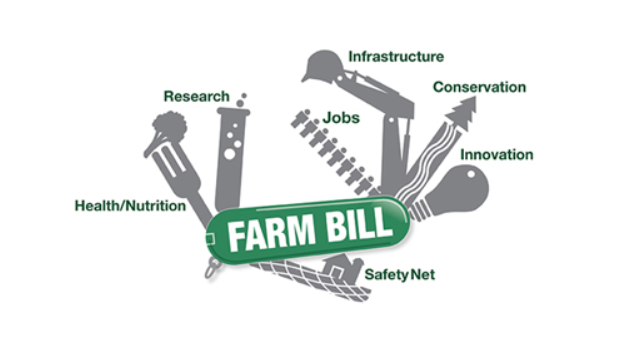All Americans should be paying attention to the progress of the Farm Bill. It’s revised every four years to reflect the current state of farming as well as the plight of families in need who benefit from the Supplemental Nutrition Assistance Program (SNAP). The current farm bill expires at the end of September.
In order to have an opinion, it’s nice to have an understanding of the thing about which you are opining. To foster that, we’re offering a bevy of resources that the extremely patient reader can use to explore the contents of the bill, and some of the many published opinions of where this year’s bill might succeed and fail in its various missions. We don’t for a second believe that any of these links are completely objective, but there are a lot of facts among all the interpretations.
Friends of Evanston Farmers Markets is offering these links without offering support for any specific opinions expressed therein.
- This USDA document, 2018-farm-bill-and-legislative-principles offers a set of principles that the USDA shared with Congress “for consideration as they craft the Farm Bill and other legislation beneficial to the agricultural economy.” It serves as a sort of baseline for what activities and goals the Farm bill should support.
- The House Agriculture Committee maintains a storehouse of documents, videos, and press releases. Click here for the link. It’s largely a clearinghouse of partisan sentiment, but that’s how bills get crafted and passed, so it’s worth plowing through.
- The Food Research and Action Center is a well regarded nonprofit that works “to improve public policies and public-private partnerships to eradicate hunger and undernutrition in the United States.” FRAC is generally critical of the nutrition portion of the House Farm Bill. The page they maintain with analysis and opinion can be viewed by clicking here.
- According to their mission statement, The Union of Concerned Scientists “puts rigorous, independent science to work to solve our planet’s most pressing problems.” The UCS website includes a page entitled “A Farm Bill for Good Food.” It’s available by clicking here. It includes a policy brief you can download that includes a comprehensive listing of references used to develop their stated views, including the identification of “key provisions from three bills that have been introduced to shape the 2018 farm bill debate: the Beginning Farmer and Rancher Opportunity Act (H.R. 4316), the Food and Farm Act (H.R. 4425), and the Local Food and Regional Market Supply (FARMS) Act (S. 1947/H.R. 3941).“
- The Sierra Club describes themselves as “the United States’ oldest, largest, and most influential grassroots environmental group…dedicated to protecting the natural world. They recently published an article in their online journal, Sierra, entitled, “In an Ironic Twist, GOP Farm Bill Proposal Attacks States’ Rights” It’s all about an amendment proposed by Iowa representative Steve King. He advanced this proposal first in 2014, when it was opposed by “legislators, farmers, ranchers, environmental rights groups, and animal welfare organizations.” Basically, “Under the King Amendment, no state would be able to pass food and agriculture laws that establish standards that are stricter than any other state’s or more stringent than federal rules.” Read all about this proposal, and the (hopefully) unintended consequences of its passage by clicking here.
The Local Food and Regional Market Supply (FARMS) Act we just mentioned was introduced by a bipartisan group of Senators and Representatives in late 2017 is meant to expand opportunities for family farmers and improve access to healthy food to families throughout the country.The National Sustainable Agriculture Coalition has created a page with information about this important bill that’s located right here. Why is this bill important? According to NSAC, “the bill recognizes the vast, untapped potential in our farming and food producing communities and offers ways to transform that potential into economic prosperity. The Local FARMS Act means opportunity for our family farmers, as well as increased access to fresh, healthy foods for American families.”
Well, that’s a start! We’re reviewing other sites with other views on the good and the bad in the House and Senate version of these bills, and we will update this page when we find content worth sharing.




